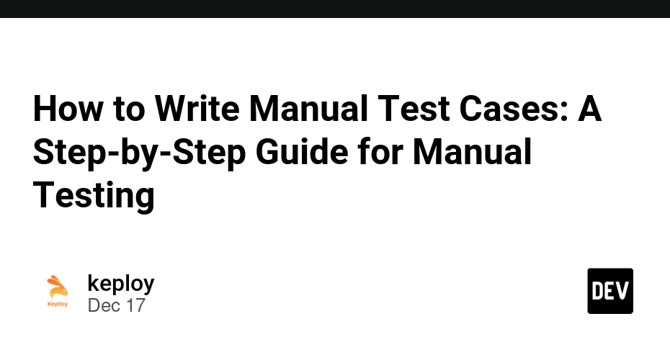Dev
3w
340

Image Credit: Dev
How to Write Manual Test Cases: A Step-by-Step Guide for Manual Testing
- Manual testing remains critical for testing new features, validating user experience, and detecting visual inconsistencies.
- A manual test case is a detailed document outlining specific steps to validate an application functionality.
- Writing well-defined test cases ensures different testers obtain uniform results with consistency, accuracy, and traceability.
- A good test case has a unique identifier, objective, preconditions, steps to execute the test, expected result, actual result, and status.
- It is essential to target the long-tail keyword, 'how to write manual test cases,' and naturally incorporating 'manual testing' in key sections to rank effectively for both phrases.
- Test scenarios are broad statements that describe what needs to be tested such as testing the login functionality of a website.
- Preconditions might include specific user roles, access credentials, or configurations.
- The steps should be easy to follow, even for someone unfamiliar with the application.
- To write effective manual test cases, testers must use simple language, consistent naming conventions, test both expected outcomes and failure cases, make test cases reusable and avoid assumptions.
- Keep in mind common mistakes like writing vague steps, skipping preconditions, overlooking edge cases, and not updating test cases.
Read Full Article
20 Likes
For uninterrupted reading, download the app